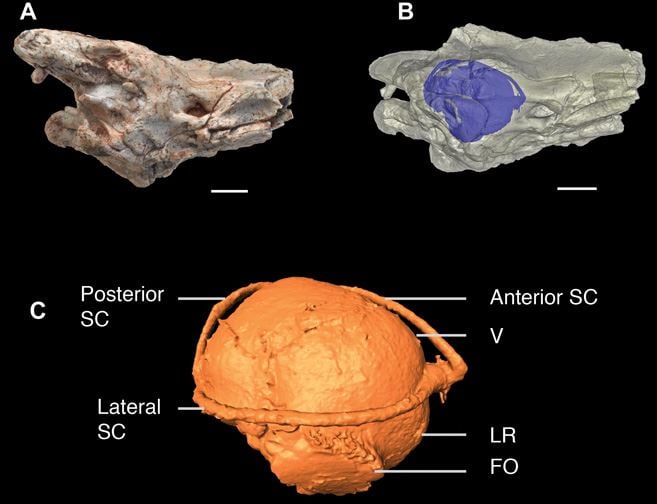Snakes lost their legs to be able to more effectively hunt and live in burrows – Scottish and American scientists have concluded after studying a 90-million-year old fossilized snake skull – and not to adapt to living in the sea, as many experts had previously suggested.
While snakes today can be found in several different types of environments, many continue living and hunting in burrows.
Scientists from the American Museum of Natural History and the University of Edinburgh wrote about their findings in the journal Science.
They compared different CT scan images and now believe that snakes definitely did not lose their arms and legs in order to better adapt to life in the sea.
 Despite having no legs, snakes are superb hunters.
Despite having no legs, snakes are superb hunters.
Dr. Mark Norell, a paleontologist and molecular geneticist who works at the American Museum of Natural History, and Dr. Hongyu Yi, a Royal Society Sino-British Fellow, who works at Edinburgh University’s School of GeoSciences, used CT scans to examine the inner ear of a 2-metre-long reptile closely linked to modern snakes called Dinilysia patagonica.
The bony cavities and canals of Dinilysia patagonica’s inner ear controlled its balance and hearing, as is the case with modern burrowing snakes.
Detailed 3-D models
Dr. Yi and Dr. Norell created 3-dimensional virtual models to compare the inner ear of fossils with those of today’s snakes and lizards.
The researchers found a distinctive structure within the inner ear of actively burrowing animals, which likely also helps them identify predators and prey. This structure does not exist in snakes today that live in water or above ground.
According to the scientists, their findings should help researchers in their quest to fill the gaps in the story of the evolution of snakes.
 (A) Dinilysia patagonica’s braincase, showing the right otic region -lateral view. (B) X-ray CT model of MACN-RN 1014 – inner ear in blue highlight. (C) Bony inner ear of Dinilysia patagonica. FO, foramen ovale; LR, lagenar recess; SC, semicircular canal; V, vestibule. Scale bars, 5 mm. (Credit: Science Advances)
(A) Dinilysia patagonica’s braincase, showing the right otic region -lateral view. (B) X-ray CT model of MACN-RN 1014 – inner ear in blue highlight. (C) Bony inner ear of Dinilysia patagonica. FO, foramen ovale; LR, lagenar recess; SC, semicircular canal; V, vestibule. Scale bars, 5 mm. (Credit: Science Advances)
Dinilysia patagonica is definitely the largest burrowing snake that ever existed, as far as we know, the authors confirmed.
Snakes’ common ancestor was probably a burrower
The findings in this study also offer clues regarding the hypothetical species from which all snakes today descended – their common ancestor – which most likely was a burrower.
Dr. Hongyu Yi explained:
“How snakes lost their legs has long been a mystery to scientists, but it seems that this happened when their ancestors became adept at burrowing. The inner ears of fossils can reveal a remarkable amount of information, and are very useful when the exterior of fossils are too damaged or fragile to examine.”
Dr. Norell added:
“This discovery would not have been possible a decade ago – CT scanning has revolutionised how we can study ancient animals. We hope similar studies can shed light on the evolution of more species, including lizards, crocodiles and turtles.”
The Royal Society supported the study.
Reference: “The burrowing origin of modern snakes,” Mark A. Norell and Hongyu Yi. Science Advances. Nov 27, 2015. DOI: 10.1126/sciadv.1500743.


Comments are closed.